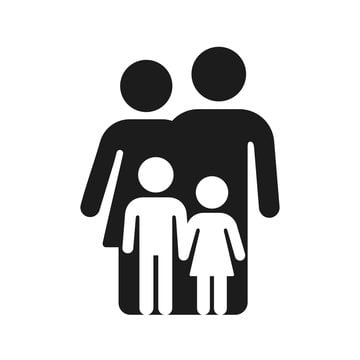Unlocking Deeper Connection: Mastering Nonverbal Communication in Romantic Relationships
Effective communication is the cornerstone of any thriving romantic relationship, but the conversation extends far beyond spoken words. Nonverbal communication – encompassing gestures, expressions, and touch – plays a pivotal, often unspoken, role in building intimacy, navigating disagreements, and fostering a lasting bond. Developing the ability to both understand and utilize these subtle cues is paramount to nurturing a healthy and fulfilling partnership.
Building Intimacy Through Unspoken Signals: The power of nonverbal communication lies in its ability to forge a deeper emotional connection between partners. A gentle touch, a knowing glance, or a warm smile transcends the limitations of language, conveying affection and reassurance in ways words often cannot. These unspoken gestures build trust and create a profound sense of emotional intimacy, strengthening the very foundation of the relationship. This unspoken language forms a silent bridge, connecting partners on a level that verbal communication alone cannot reach.
Decoding True Feelings: While words can sometimes mask or deflect true emotions, nonverbal cues often offer a window into the underlying reality. Body language, facial expressions, and tone of voice provide invaluable insights into your partner's thoughts and feelings, even when verbal communication remains hesitant or unclear. This heightened awareness promotes genuine understanding, minimizes misunderstandings, and lays the groundwork for more effective and empathetic communication. It allows for a deeper understanding of the unspoken emotions playing beneath the surface.
Navigating Conflict with Grace: Disagreements are an inevitable part of any relationship. However, the manner in which these conflicts are handled significantly impacts the overall health of the partnership. Nonverbal cues play a crucial role in conflict resolution. An open posture, relaxed body language, and attentive eye contact signal a willingness to listen and compromise, fostering a collaborative approach. Conversely, defensive postures, avoidance of eye contact, and tense body language can escalate tension and hinder productive resolution, exacerbating the conflict.
Expressing Love Beyond Words: The expression of love extends far beyond verbal declarations. Simple, yet profound, nonverbal actions such as holding hands, embracing, or sharing a tender kiss communicate volumes about affection and commitment. These seemingly small gestures, frequently overlooked, contribute significantly to a partner's feeling loved, appreciated, and valued, enriching the emotional landscape of the relationship.
The Significance of Facial Expressions: The human face is a remarkably expressive canvas, reflecting a wide spectrum of emotions. A smile can instantly brighten the atmosphere, while a furrowed brow subtly hints at concern or worry. Understanding and responding appropriately to your partner's facial expressions fosters empathetic engagement, strengthening the connection and promoting mutual understanding. Paying close attention to these subtle shifts in expression can prevent misinterpretations and cultivate emotional responsiveness.
The Power of Eye Contact: Sustained eye contact during conversations is a powerful nonverbal cue that demonstrates attentiveness and genuine interest. It creates a strong sense of connection, fostering intimacy and mutual understanding. Conversely, avoiding eye contact can signal disinterest, discomfort, or even deception, significantly impacting the quality of communication. Mindful eye contact, therefore, is a cornerstone of effective interaction.
The Melody of Tone: The manner in which we speak is as crucial as the words we choose. A gentle, soothing tone conveys empathy and understanding, creating a safe and receptive environment for communication. In contrast, a harsh or critical tone can trigger defensiveness and distance, hindering open and honest dialogue. Being mindful of your tone and ensuring it aligns with your message is essential for building a positive and supportive communication dynamic.
The Comfort of Touch: Physical touch is a potent and often underestimated form of nonverbal communication, especially within romantic relationships. A comforting caress, a supportive hug, or a reassuring touch can provide solace during challenging times. These acts of physical affection significantly enhance feelings of safety, security, and intimacy, strengthening the emotional bond between partners.
Understanding Body Language: Body language is a rich source of information, often communicating more than words alone. Leaning in, maintaining an open posture, and mirroring your partner's body language are all indicators of engagement and interest. Conversely, crossed arms, turning away, or avoiding physical proximity can signal disengagement and a lack of connection. Paying attention to these cues allows for a more nuanced understanding of your partner's feelings and intentions.
Nonverbal Cues and Attraction: Nonverbal communication subtly yet powerfully reflects the level of attraction between partners. Mirroring gestures, leaning in during conversation, and maintaining close physical proximity often suggest a strong connection. Consistent distance, on the other hand, may indicate a lack of interest or emotional connection. These subtle cues offer valuable insights into the dynamics of the relationship.
Nuance in Emotional Expression: Nonverbal cues often surpass the limitations of language in expressing the full spectrum of human emotions. A gentle touch, a knowing look, or a subtle gesture can convey unspoken emotions with a depth and richness that words alone cannot capture, adding layers of meaning to communication.
Building Trust and Authenticity: Consistency between verbal and nonverbal communication is paramount for establishing trust and fostering authenticity. When words and actions align, it creates a sense of sincerity that strengthens the bond between partners. Discrepancies, however, can breed mistrust and confusion, hindering the relationship's growth and development.
Maintaining the Spark: Nonverbal communication is a powerful tool for nurturing romance and keeping the spark alive, even in long-term relationships. Playful touches, lingering eye contact, and flirtatious smiles can inject excitement and passion into the dynamic, preventing the relationship from becoming stale.
Bridging the Distance: In long-distance relationships, the importance of nonverbal communication is amplified. Video calls, thoughtfully chosen emojis, and creative ways to convey affection become vital tools for maintaining intimacy and connection, bridging the physical separation.
Cultivating Self-Awareness: Understanding your own nonverbal communication is just as crucial as understanding your partner's. Being aware of how your body language, tone, and gestures impact your partner allows you to communicate more thoughtfully and avoid unintentional misinterpretations, fostering healthier and more effective interactions.
In conclusion, nonverbal communication is not simply a supplement to verbal communication; it is an integral pillar that supports the strength and depth of romantic relationships. By developing awareness and understanding of these unspoken cues, couples can cultivate deeper intimacy, navigate conflict more effectively, and forge a more fulfilling and enduring connection. It is a language worth learning and mastering for the betterment of any relationship.



